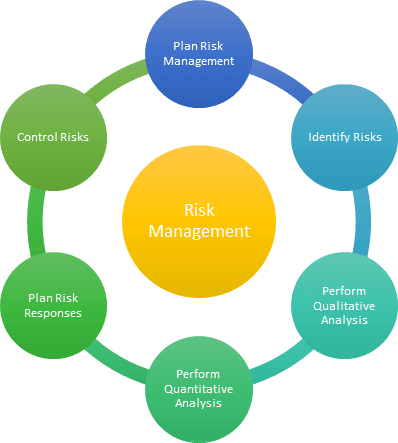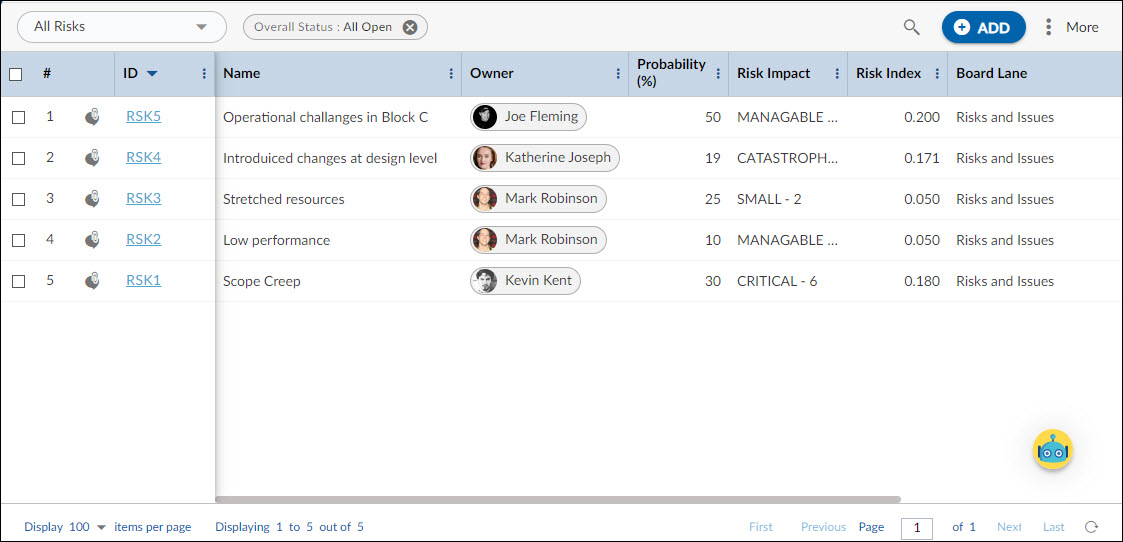Risk management is a cornerstone of successful project management, yet it’s often treated as an afterthought rather than a strategic imperative. Effective risk mitigation goes beyond simply reacting to problems as they arise; it involves anticipating potential issues and developing strategies to address them proactively. This approach not only protects projects from disruption but also creates opportunities for optimization and growth.
What sets truly successful project teams apart is their ability to anticipate and mitigate risks before they materialize, adopting a mindset that sees risk not as a threat but as an opportunity for improvement. This proactive approach allows businesses to stay ahead of challenges, ensuring that they not only survive turbulent times but thrive amidst uncertainty. Despite the significance of risk mitigation, the conversation around it often lacks depth, with many focusing on generic frameworks rather than specific strategies that align with unique business contexts.
For project managers and PMOs, a comprehensive understanding of risk mitigation is no longer optional—it’s critical for safeguarding resources, timelines, and business objectives. By diving deeper into lesser-discussed methods, such as the nuanced application of avoidance strategies or the transfer of risk through partnerships, project teams can significantly enhance their resilience. This article explores these rarely highlighted approaches and provides a roadmap to effectively navigate the complex terrain of project risk mitigation.
What is Risk Mitigation?
Risk mitigation is the systematic process of identifying potential risks in a project and taking proactive steps to minimize their impact or prevent them from occurring. In essence, it’s about safeguarding project objectives from uncertainty, ensuring that unexpected events do not derail timelines, budgets, or desired outcomes. This is not simply a one-time action but a continuous practice that begins during project planning and extends through to completion.
The importance of proactive risk mitigation in project management cannot be overstated. Unlike reactive strategies, which address risks only after they have caused damage, proactive risk mitigation involves forecasting possible challenges and developing contingency plans well in advance. This approach is vital because it enables project teams to maintain control even in unpredictable circumstances, avoiding panic-driven decision-making when problems arise. When risks are anticipated and prepared for, the chances of project success increase significantly, as does the ability to allocate resources more efficiently.
Source: PMIS
Furthermore, risk mitigation aligns project management with long-term business goals. By addressing potential threats early, teams can ensure that resources are not wasted on crises, allowing for more strategic allocation of time and budget. In a fast-evolving project landscape, proactive risk management becomes a competitive advantage, enabling teams to adapt swiftly while still delivering value.
Why Do We Mitigate Risks in Projects?
Risk mitigation is essential in project management because it helps prevent potential disruptions that can significantly impact project timelines, budgets, and objectives. When risks are left unmanaged, they can snowball into larger issues that threaten to derail a project entirely. For instance, a minor delay in resource allocation could lead to missed deadlines, resulting in penalties, additional costs, or damage to client relationships. Proactively addressing risks ensures that project managers can maintain control over these variables and respond to challenges with pre-established solutions rather than making hurried, last-minute decisions.
Beyond immediate project success, risk mitigation plays a critical role in protecting long-term business interests. When risks are mitigated effectively, projects are more likely to be delivered on time and within budget, boosting the organization’s reputation for reliability and competence. In today’s competitive market, clients and stakeholders expect seamless execution. Failure to address risks can not only lead to project failure but also harm business credibility, affecting future project opportunities. Furthermore, risk mitigation enhances the confidence of project teams by providing a clear roadmap to handle potential issues. This preparedness fosters a collaborative working environment where team members are more focused on delivering results rather than constantly troubleshooting unexpected problems.
In short, the proactive management of risks is the foundation of a resilient and adaptive project management strategy. It ensures that projects remain on track, client expectations are met, and the organization can continuously improve its approach to managing future challenges.
Types of Risks You May Encounter in Project Management
In project management, risks come in various forms, each with its own potential to disrupt project success. Understanding the types of risks a project may encounter is the first step towards developing an effective risk mitigation strategy.
1. Financial Risks
These risks pertain to the project’s budget and financial health. Issues like cost overruns, inadequate funding, or currency fluctuations can have a major impact on a project’s profitability and overall viability. Financial risks are particularly critical in long-term or large-scale projects, where even small budget deviations can snowball into larger problems.
2. Operational Risks
Operational risks stem from the internal workings of the project, including team dynamics, processes, and workflows. Inefficiencies in resource management, delays in task execution, or miscommunication between departments can lead to bottlenecks that hinder project progress. Such risks often arise from poorly defined roles or inadequate planning.
3. Technical Risks
Technology-related risks include software failures, system crashes, or integration issues between different project tools. As more organizations rely on digital tools for project execution, technical risks have become more prevalent. Technical complexities can lead to significant delays if not addressed promptly.
4. External Risks
External risks are those that lie beyond the control of the organization, such as regulatory changes, market fluctuations, or natural disasters. These risks are unpredictable, yet they can have a devastating impact on project timelines and deliverables.
The Four Key Risk Mitigation Strategies
There are four primary strategies that project managers use to mitigate risks, each offering different ways to handle potential threats.
1. Avoidance
Risk avoidance involves changing the project plan to sidestep potential risks altogether. This could mean choosing a less risky alternative or modifying the project scope to eliminate certain risk factors. By altering the approach, project managers can prevent certain risks from ever materializing.
2. Reduction
This strategy focuses on minimizing the impact or likelihood of risks. Project managers can reduce risks by implementing safety measures, conducting thorough testing, or improving process efficiencies. This way, even if the risk occurs, its effects will be less severe.
3. Transfer
Risk transfer shifts the burden of risk to a third party, such as through insurance or outsourcing critical tasks. By transferring the risk, the project’s internal resources are less affected, and the financial or operational impact of the risk is shared or absorbed by others.
4. Acceptance
Sometimes, risks cannot be avoided, reduced, or transferred. In such cases, project managers may choose to accept the risk. This approach acknowledges that the risk is part of the project’s landscape, and teams prepare contingency plans to minimize the potential damage when it arises.
How to Implement Risk Mitigation Strategies in Your Business?
Effective implementation of risk mitigation strategies requires more than just identifying potential risks; it involves embedding risk management into every phase of the project lifecycle. For businesses, especially those with complex and high-stakes projects, this means building a risk-aware culture where project teams continuously evaluate and address risks. The first step in implementation is the development of a comprehensive risk management plan, which outlines the risk categories, potential triggers, and appropriate mitigation strategies for each identified risk. This plan serves as a roadmap for all stakeholders, ensuring that everyone knows how to respond when risks emerge.
Once a plan is in place, it is crucial to conduct regular risk assessments throughout the project. These assessments should not be a one-time exercise, but rather a continuous process, allowing teams to adapt to changing circumstances and emerging risks. By conducting periodic reviews, project managers can ensure that risk mitigation strategies remain relevant and effective. Businesses must also ensure they allocate adequate resources—time, budget, and personnel—to risk management activities. Often, organizations underestimate the resources required to manage risks, which can lead to overlooked threats and unanticipated disruptions.
Lastly, collaboration is key to successful risk mitigation. Cross-functional teams should be encouraged to share insights, concerns, and lessons learned from past projects. The more transparent and open the communication, the better equipped the project team will be to anticipate and manage risks before they escalate. Implementing risk mitigation strategies isn’t just about following a set process—it’s about fostering a proactive mindset and creating a resilient project management approach that can weather challenges efficiently.
Strengthening Project Outcomes Through Risk Mitigation
In an era where projects are increasingly complex and subject to unpredictable variables, the role of risk mitigation has become more critical than ever. By proactively addressing risks, businesses can not only protect their projects from potential pitfalls but also position themselves to capitalize on opportunities that arise from effectively managed risks. Successful risk mitigation is not simply about minimizing damage; it’s about navigating uncertainty with confidence, ensuring that project goals remain attainable despite the challenges that might emerge along the way.
For project managers and PMOs, developing a comprehensive risk mitigation strategy is essential for maintaining control over project outcomes. By understanding the types of risks that may arise, selecting the appropriate mitigation strategy—whether it be avoidance, reduction, transfer, or acceptance—and embedding risk management throughout the project lifecycle, organizations can ensure smoother project execution. In the end, risk mitigation is more than just an insurance policy for project success; it is a fundamental practice that strengthens the overall project management process, fostering resilience, adaptability, and long-term business growth. As businesses continue to operate in volatile environments, those that prioritize risk mitigation will be better positioned to deliver consistent value, safeguard their reputation, and enhance their competitive edge.
Leveraging Nimble for Proactive Risk Management
Managing risks effectively requires more than just a reactive approach—it calls for a strategic framework that integrates risk management into every stage of the project lifecycle. Nimble Project Management platform offers a suite of advanced risk management features designed to help project teams anticipate, evaluate, and mitigate risks seamlessly. By using Nimble risk management feature, teams can not only identify potential threats early but also implement proactive strategies to safeguard project success and maintain focus on their long-term goals.
1. Risk Identification and Categorization: Nimble allows users to capture and categorize risks by various factors, such as financial, operational, technical, and external risks. This helps in providing a structured overview of potential threats across the project landscape.
2. Mitigation and Contingency Planning: Nimble supports detailed mitigation plans for each identified risk, linking them to specific project milestones. Contingency plans can also be developed within the platform, ensuring that teams are prepared to act swiftly when a risk materializes.
3. Monitoring and Alerts: The system monitors project risks and provides real-time alerts when certain risk thresholds are met. This continuous monitoring enables proactive adjustments, helping project teams stay ahead of potential disruptions.
4. Collaboration and Documentation: Nimble fosters collaboration by allowing team members to contribute to risk management efforts. All changes and updates to the risk management plan are logged and documented, providing a clear audit trail for future reference.
By leveraging Nimble’s comprehensive risk management features, organizations can enhance their ability to predict and manage risks efficiently, ensuring smoother project execution and long-term success. Sign up for a Free trial.


![project risk management process1 Project Risk Management]](https://www.nimblework.com/wp-content/uploads/2024/09/project-risk-management-process1-1024x768.jpg)








